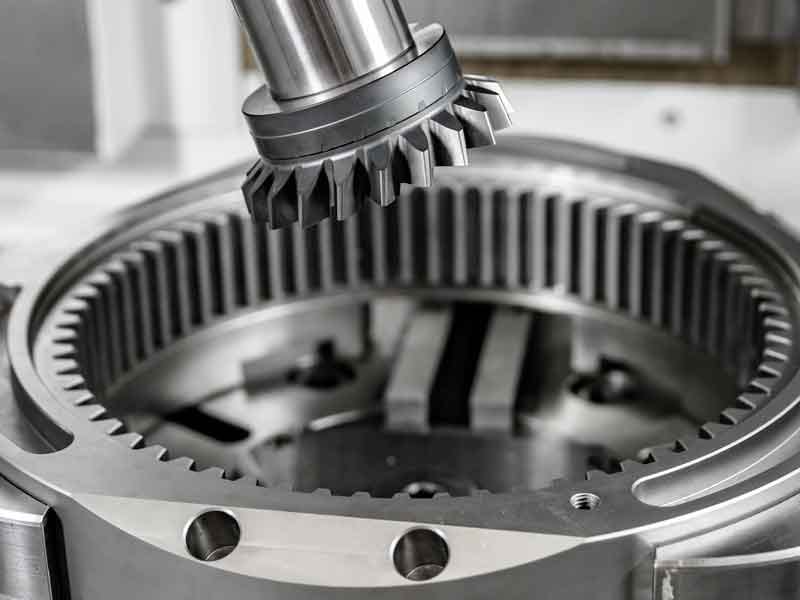Being a mechanical engineer, we all are aware of the fact that gears are one of the most necessary and useful machine components in manufacturing industry. Without gears, it is impossible to imagine the transmission system or work transportation process.
Here we will get to know about the gear manufacturing process called “Gear Hobbing” which is used to manufacture most of the gears in this world. We will discuss about basics of Gear Hobbing, its working principle, parts, types of Gear Hobbing, advantages and disadvantages.
Gear Hobbing Meaning
Table of Contents
Gear Hobbing is popularly known as one of the best gear generation process. It is a continuous gear manufacturing process which is widely used for the production of external cylindrical gears.
Since the demand of the industries are increasing day by day. So gears are required in very quick succession with a high accuracy as well. Thus to fulfill this requirement, the role of Gear Hobbing becomes more important.
Working of Gear Hobbing process
In this process, the gear blank is rolled using a rotating mill called a hob. Gear Hobbing is done using a multi-point cutting tool called a gear hob. It looks like a worm wheel that has several straight grooves parallel to the axis all around.
These grooves are shaped to give them the correct angles so that they can act as cutting edges. In gear hobbing operation, the hob rotates at the appropriate rpm and is simultaneously fed to the gear blank.
The gear blank is also retained as a rotatable. The revolutions of both, the gear blank and the gear hob are so synchronized that for each revolution of the gear shaft, the gear blank rotates a distance equal to one pitch of the gear to be cut.
The movement of both the gear blank and the hob is maintained continuously and evenly. The teeth of a hob behave like screw threads with a certain helix angle.
During operation, the hob is tilted at a helix angle so that its cutting edges remain perpendicular to the gear blank. Gear hobbing is used to produce a wide variety of gears, such as spur gears, helical, herringbone, splines etc.
Types of Gear Hobbing process
The gear hobbing process is divided into different types according to the feeding directions of the gear cutting milling cutter. The classification is described below.
Hobbing with axial feed
In this process, the gear plate is fed against the gear blank along the face of the blank and parallel to its axis. This is used to make spur and helical gears.
Rolling mill with radial feed
In this method, the hob and gear blanks are set so that their axes are perpendicular to each other. The rotary hob is fed against the gear blank in the radial direction or perpendicular to the axis of the gear blank. This method is used to make worm wheels.
Hobbing with tangential feed
It is also used for cutting teeth on a worm wheel. In this case, the hob is held with the axis horizontally, but at right angles to the axis of the blank. The rolling plate is set at the full depth of the tooth and then moved axially forward. The hob is fed tangentially to the face of the gear blank.
Advantages of Gear Hobbing
As we have discussed earlier that Gear Hobbing is one of the most important manufacturing in industry. Thus it has lots of advantages which are given below:
(a) Gear hobbing is a quick and continuous process so it is considered as an economical process as compared to other gear manufacturing processes.
(b) It has Lower production cycle time, i.e. faster gear production rate.
(c) Gear Hobbing process is one of the most versatile as compared to other gear generation processes.
(i) Capable of producing a wide variety of gears such as spur gears, helical gears, worm gears, spur gears, etc.
(ii) The required indexing process is greatly simplified and capable of producing any number of teeth with consistent module accuracy.
(iii) A special type gear named herringbone gear will be generated exclusively by rolling gears.
(iv) A wide range of batch sizes (small to large volume) can be accommodated by this process.
(d) Several gear blanks mounted on the same shaft can be machined simultaneously.
(e) A hob is a multi-point cutting tool that has multiple cutting teeth or edges at a time when several cutting edges are working so that there is plenty of time to dissipate the heat generated. There is no overheating and cutting tool.
Disadvantages of Gear Hobbing
There are also disadvantage of Gear Hobbing process which are given below:
- Not used to make internal gears.
- Limited abutments larger than the gear root diameter.
- Grooves, splines and serrations are not suitable for hobbing cutters.
Applications of Gear Hobbing process
- It is very widely used to manufacture almost all different different types of gears like spur gear, helical gear, worm and worm wheel etc.
- Generation of internal gears are also one of major application of Gear Hobbing.
- Used to produce cylindrical gears
